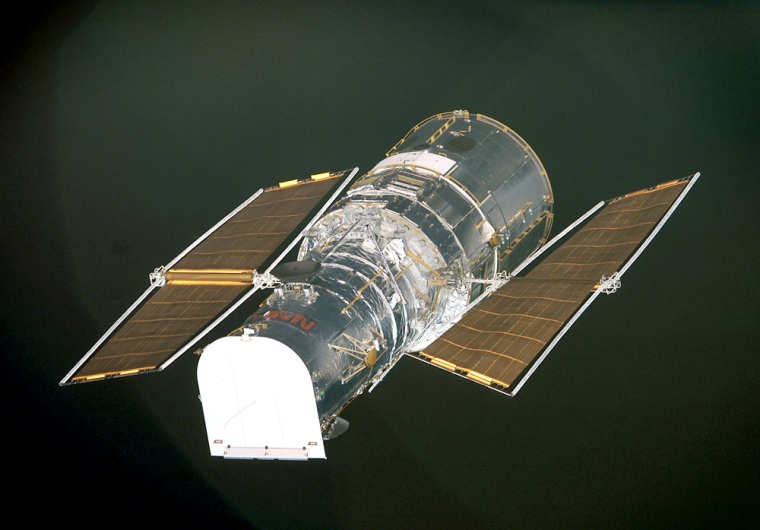If NASA’s Hubble Space Telescope fireballs into Earth’s atmosphere on its own, the re-entry of that massive orbiting observatory would violate the space agency’s own safety standard.
Engineers from NASA's Orbital Debris Program Office were tasked to calculate the risk to human population should Hubble re-enter the Earth’s atmosphere in an uncontrolled manner.
Don’t worry. No need for hard hats or anti-debris umbrellas as yet.
Based upon the latest configuration and orbit of the space telescope, as well as a projection of solar activity, Hubble is expected to re-enter Earth’s atmosphere around the year 2020. Furthermore, studies are now under way aimed at robotically saving the telescope, nudging it to a higher altitude for prolonged looks at the surrounding universe. Hubble could also be ditched in a controlled way into a remote stretch of ocean.
But in the event that Hubble waterfalls from space in willy-nilly fashion — look out below!
At least two tons (2,055 kilograms) of the estimated 26,000 pounds (11,792 kilograms) of the observatory would survive the fiery fall. Such a tumble would create a debris footprint stretching over 755 miles (1,220 kilometers) in length.
That’s the word from a study group led by Ries Smith, an aeronautical engineer at Lockheed Martin Space Operations in Houston. Their work is reported in the October newsletter of the Orbital Debris Quarterly News, issued by NASA’s Orbital Debris Program Office at Johnson Space Center in Houston.
For you software extremists out there, the re-entry survivability analysis was done using the NASA Object Re-entry Survival Analysis Tool, Version 5.8.
The analysis suggests that the risk posed to the human population in the year 2020 is 1 out of 250 — a risk that exceeds the risk of 1 out of 10,000 cited in NASA Safety Standard 1740.14.
A two-armed Canadian-built android — the Special Purpose Dexterous Manipulator, known as DEXTRE, launched from Cape Canaveral and operated by an astronaut in Houston — is emerging as the leading candidate for a robotic mission to save Hubble.
